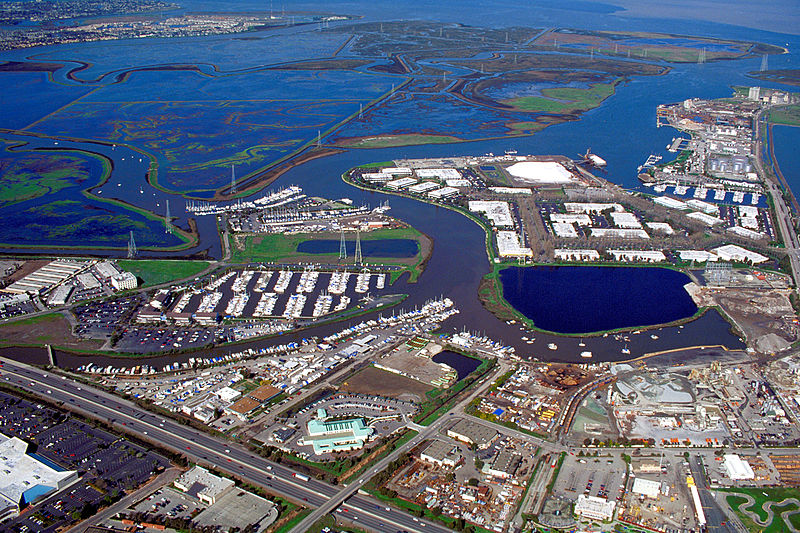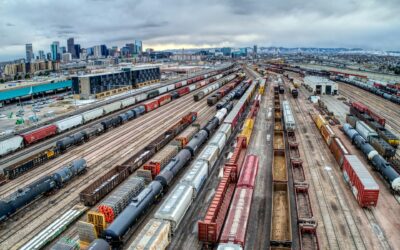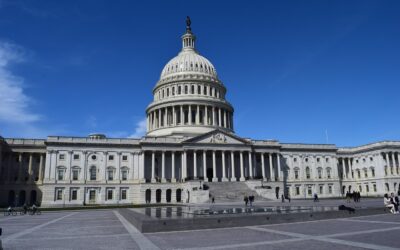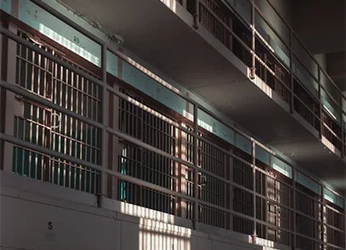Port infrastructure in America is a critical component of economic growth, and because of that, significant capital investments distributed through grants allocated by the federal government are common. It has been estimated that between 2021 and 2025, federal investment in port infrastructure will be approximately $163 billion. These investments are focused on enhancing capacity and efficiency, especially as maximum vessel size has doubled over the last 15 years. Estimates suggest that coastal port waterside infrastructure will need at least $12 billion more between now and 2031, and additional billions for landside port infrastructure. Many current and upcoming projects are in the planning stages, and the ones outlined in this column represent the type of initiatives that will obviously be launched throughout America over the next several years.
The city of Menominee, Michigan received $21 million last month from a grant program administered by the U.S. Department of Transportation. City leaders will use the funding to improve Menominee Harbor’s general cargo transportation terminal. A project to enhance the region’s freight movement capabilities will be launched. It will include reconstructing a deteriorated dock wall, installing new rail infrastructure for intermodal transport, adding covered storage facilities, and upgrading cargo handling equipment.
This project will boost the efficiency and safety of logistics operations and reduce the reliance on heavy-duty trucks. Shifting more freight to marine and rail transport will also lower transportation-related air pollution and greenhouse gas emissions. Construction is scheduled to begin in January 2026.
A planned project in Wrangell, Alaska will replace marine transportation connectivity facilities. A $25 million grant has been granted to support the project, which has a cumulative cost estimate of approximately $28 million. The upgrades will include redesigning and replacing unsafe and deteriorating infrastructure at three of the harbor’s floats. The moorage stalls in the floats range from 17 feet to 32 feet in size and they will all get new float pilings. A new parking lot will also be constructed. The effort will include environmental dredging as these upgrades prepare the harbor for future expansion and development. Permitting and design work will follow, but there is no scheduled time for the construction launch at this time.
The Sumas Land Port of Entry in Washington serves commercial trucks, personal vehicles, and pedestrians between Washington and British Columbia. Still, the port can no longer meet the operational standards for U.S. Customs and Border Control. The port will undergo an expansion and modernization upgrade that could cost as much as $155 million. Commercial inspection lanes will be increased from two to four, and personal vehicle lanes will be increased from five to six. A dedicated pedestrian corridor will be constructed to cross the border, and the main building will be modernized to improve efficiency and reduce processing delays. The site redesign will relieve the gridlock that blocks access to business and community services. Contracting solicitations are scheduled for 2025.
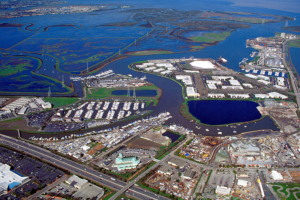
Aerial view of the port of Redwood City, California. Photo by the U.S. Army Corps of Engineers
A transportation project at the Port of Redwood City, California will expand truck access to the facility and speed up freight transportation. The project, which is estimated to cost $321 million, will also redesign the interchange between I-101 and I-84 to alleviate congestion and improve the flow of trucks carrying freight to and from the port.
Once completed, the project will earn the port a FEMA designation as a Federal Staging Area if there is ever a natural disaster. The project will eliminate a five-way intersection, add multi-lane onramps and offramps and eliminate slip ramps. A new fly-over ramp will improve access to the port. The project will add more than four miles of bike lanes and pedestrian facilities to the intersection area. Right-of-way acquisition and work on plans, specifications and estimates are currently underway, and construction will begin in early 2027.
The Richford Land Port of Entry near Richford, Vermont will undergo between $25 million and $35 million in upgrades and modernization. Various improvements will be made to the facility’s interior, including an improved work area, a secure hold and inspection area, and numerous mechanical, electrical and plumbing utility upgrades. The effort will also upgrade the port’s traffic lanes and increase mechanical gates, guardrails and bulletproof officer inspection booths. It will also improve security and speed up speed the flow of commercial goods and traffic. The design phase is just beginning, and a construction solicitation is scheduled for 2025.
Similar port-related projects will be forthcoming throughout the end of 2024, and more will be launched in 2025. America’s economic vitality depends on these projects, so interested contractors will have an abundance of new opportunities.

